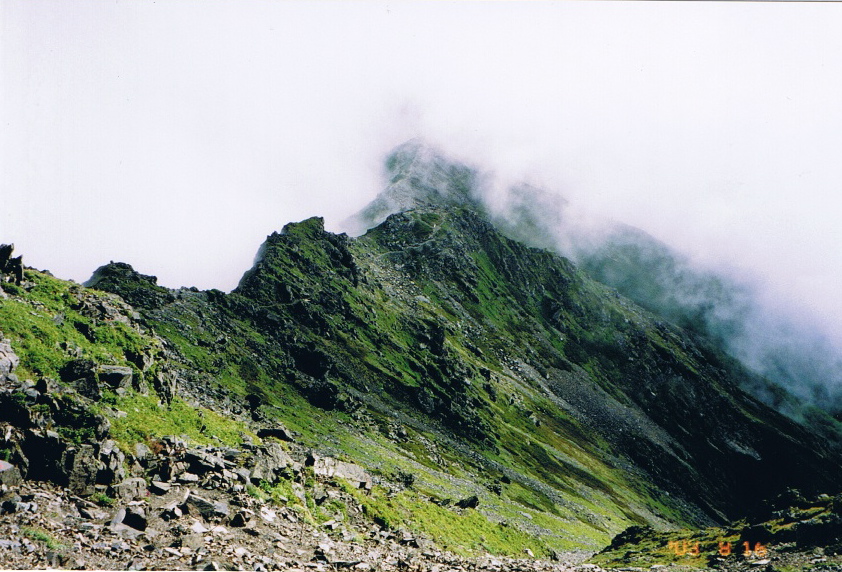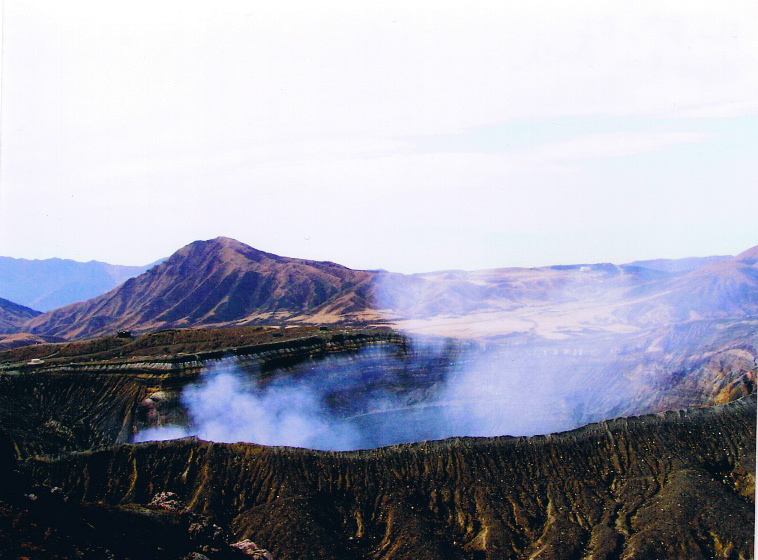Nearly a decade ago I became inspired to hike the “hyakumeizan,” Japan’s one-hundred most revered mountains. I had bagged 91 peaks when life intervened but, seeing all these Yama Girls on the trail, I decided it was time to wrap it up. Now I’m back on track with nine peaks go.
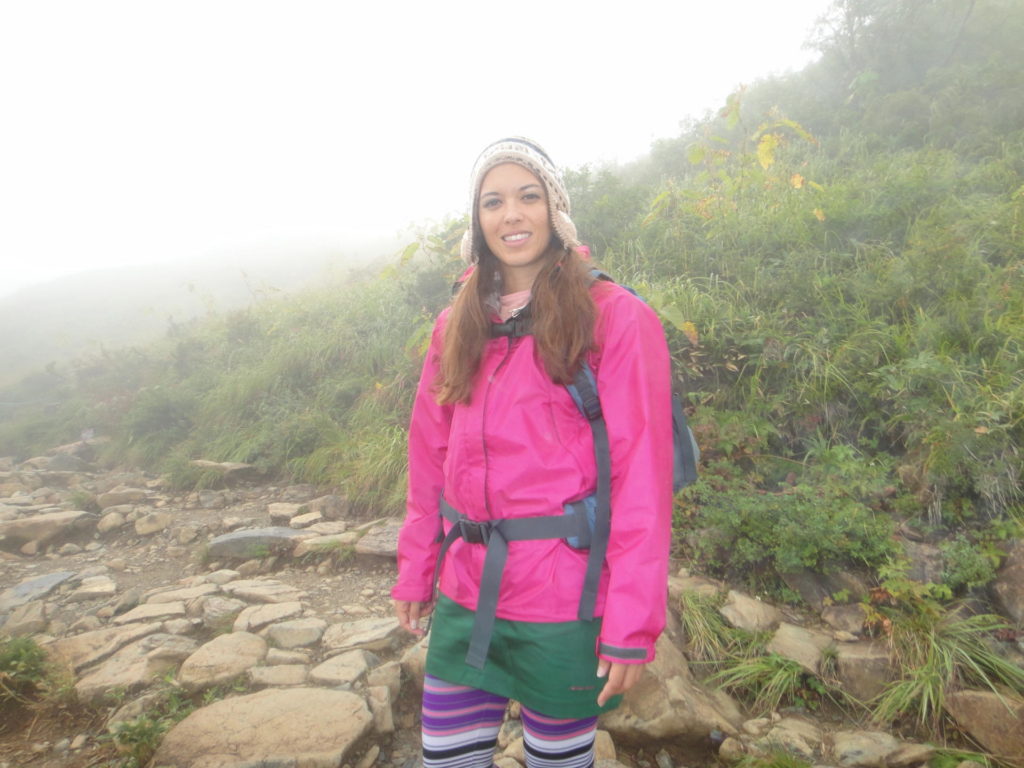
What is the hyakumeizan? Why I started. Why I stopped and why I am coming back.
Looking back on old photos of the summer of 2002 when I first ventured out on the hyakumeizan trail, memories of faraway rural towns, warm-hearted locals and me, a determined, curious hiker with no set plan, flooded into my mind. For me, the hyakumeizan was a personal challenge and an attempt to get to know Japan intimately.
Two years earlier, I had moved to Yokohama to work for the JET program when a colleague had taken me hiking to a mountain a couple hours away by train. I was amazed to see such populated trails; especially the vast number of cheerful, extremely well-outfitted senior citizens frequently greeting me with “konichiwa” and “gambatte!”
The serenity of the woods and incredible views, not to mention the satisfying burning muscles, was enough to pull me into the world of hiking. I wanted more of these views, new trails and more altitude.
Within a few months, I had accumulated a nice stash of gear, including a pair of serious water-proof boots, an assortment of fleeces, shells and packs, along with a light cooking stove and a compact tent. I was geared up and ready to call on central Japan, home of the North Alps and where the real mountains of this country were waiting.
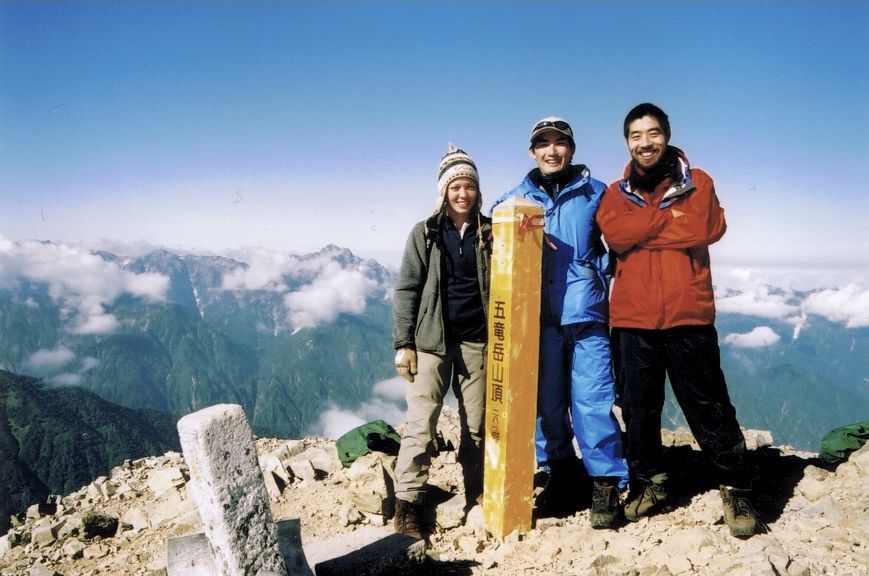
I had come across the list of these 100 mountains compiled by explorer Kyuya Fukuda in 1964 and which listed, according to him, the best mountains Japan had to offer. Not the highest peaks, but rather the most special were listed based on the criteria of: 1) Beauty, a mountain anyone would rejoice to see. 2) History, a mountain with long ties to mankind that embodies true reverence from locals. 3) Extraordinary distinctiveness, a mountain that stands out from others.
Before I was aware of Kyuya’s list, I had already ascended 17 of these “great” peaks by coincidence, mainly from my time in the Alps in Nagano. When my contract was officially finished, I came up with “a plan,” a hiking plan that would take one year, exhaust my savings, but would result in having completed the hyakumeizan.
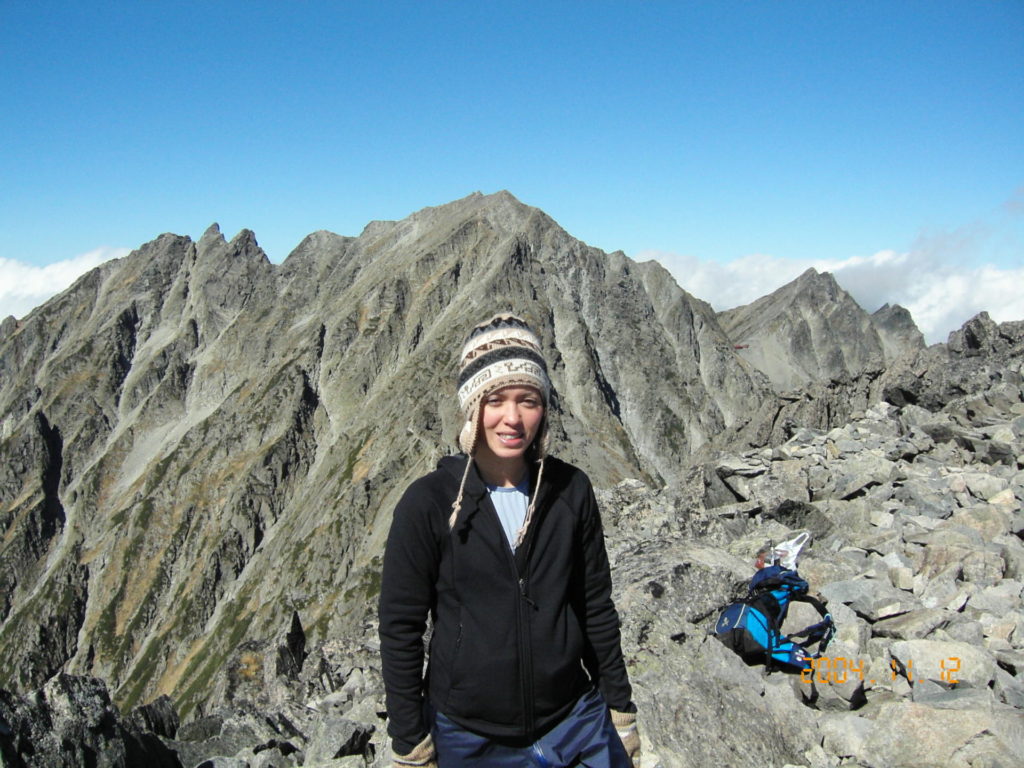
A meagerly budgeted ¥1,500 a day would suffice me, a combination of cycling through Hokkaido and hitch-hiking the rest of Japan was my “well-thought-out” travel plan, and I figured at least one peak every three days during decent weather would make this project a breeze.
So, in August of 2002, I scratched off the previous 17 mountains from my list and started carrying my life in my pack, camera in hand, a heart to hike and a freshly shaven head, I began the Hyakumeizan, starting first in the far north with Hokkaido.
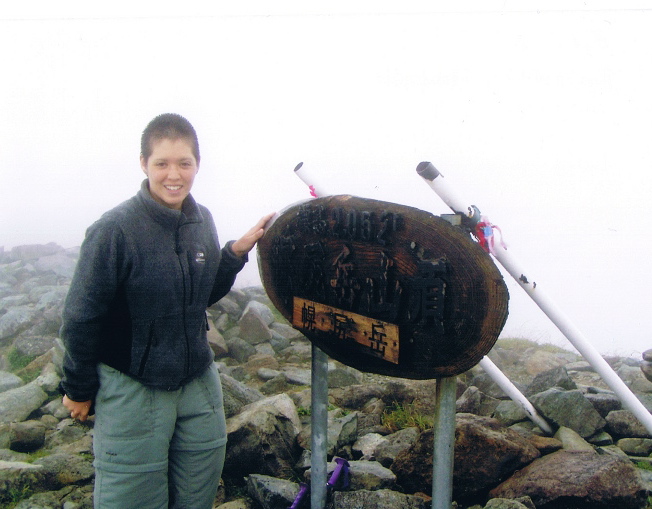
My plan was simple; one year and 100 peaks, north to south, climbing with the seasons, taking a break in between to pass the winter, and back again in spring. The 100 peaks are spread across Japan’s four main islands with the 100 peaks divided like this:
Hokkaido (North) 9
Honshu (Central) 83
Shikoku (South) 2
Kyushu (South) 6
Within the first month in Hokkaido, bumpy trailheads and heavy panniers—not to mention the inconvenience of having to ascend and descend the same route to pick up my bicycle—was enough to convince me hitch-hiking was a more flexible way to travel, and I was looking forward to the company.
By December of 2002, I had only climbed 28 mountains. Life on the road had worn me out, and limited funds were a stress, so I took cover at a ski resort for four months to refresh my mind, save some money and of course get in some snowboarding.
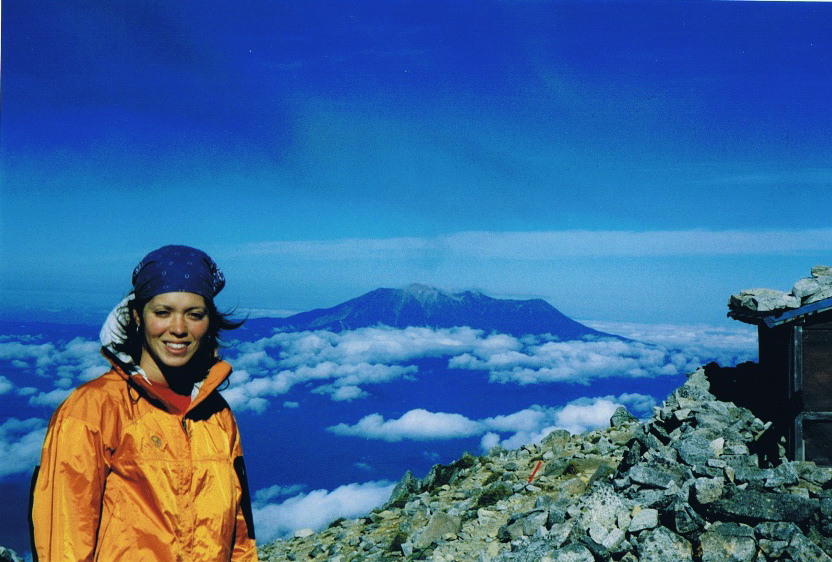
The snow thawed, winter turned into spring in no time, and I was back to the hyakumeizan. One year and 52 mountains later, my pace was off and not much had gone according to plan, but I had met some really amazing people by spending time with them in these rural mountain towns.
I decided the hyakumeizan would go on, but at a slower pace to give enough time to greater appreciate the experience. The pace has definitely slowed; it’s been nearly 10 years and I still have the last nine peaks to finish this spring and summer of 2011. Wish me luck, and I hope to see some of you Yama Girls out on the trail.
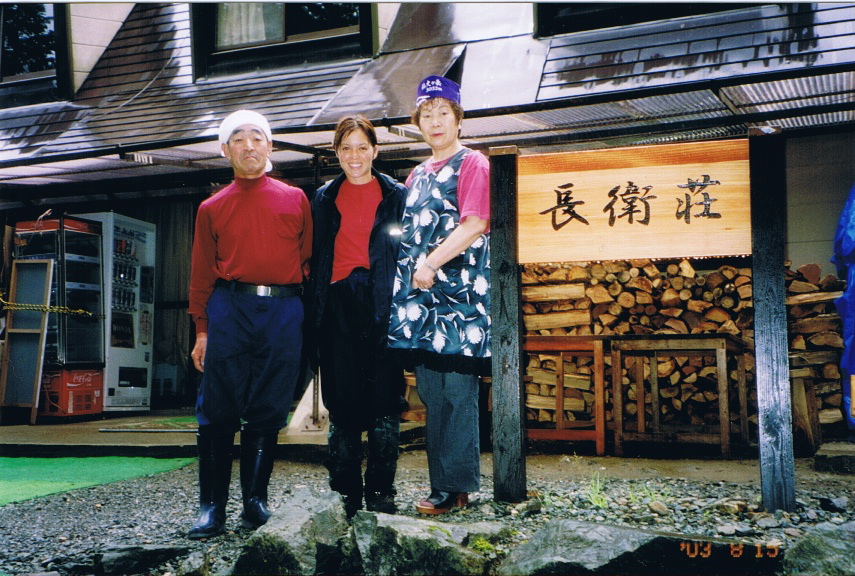
What is a Yama Girl?
With spring here, it’s not just the flowers and wildlife brightening the trails; it’s the Yama Girls. You don’t have to look tough on the mountain; you can have fun and channel your inner mountain diva. Yes, Yama Girl fashion is what’s hot for women on the trail. Bright colors such as pink, neon and funky prints such as polka dots and colorful stripes are all the rage.
Of course, women here wear hiking skirts, so we can show off colorful tights and leg warmers which add more to the fashion. So, with this boom, more young ladies are taking to the trails (and the department stores beforehand) in small groups with a mind to enjoy the outdoors in style. Whoever said fun-ctional wasn’t fun?

Ginger’s top gear to have on the trail
My top Yama Girl must-have items on the trail:
1) Hiking mini-skirt
2) Funky tights (I like stripes)
3) Color carabineers (useful for hanging stuff)
4) Light Alpaca hat (I’ve had the same one for eight years)
5) Argyle leg warmers that scrunch
6) Colorful outer rain shell
7) Print bandana (good as a neck warmer and face towel)
All geared up and nowhere to go?
So you are keen to start hiking, but not sure where to go? Here are my three picks for Yama Girls from beginners to seasoned hikers. Show off your threads while earning some nice views, but be sure bring the essentials including a water bottle, warm layer, rain gear (top and bottom), a reliable waterproof map, a head light, waterproof boots or shoes, snacks, a warm hat, gloves, shades and of course a camera to capture it all.
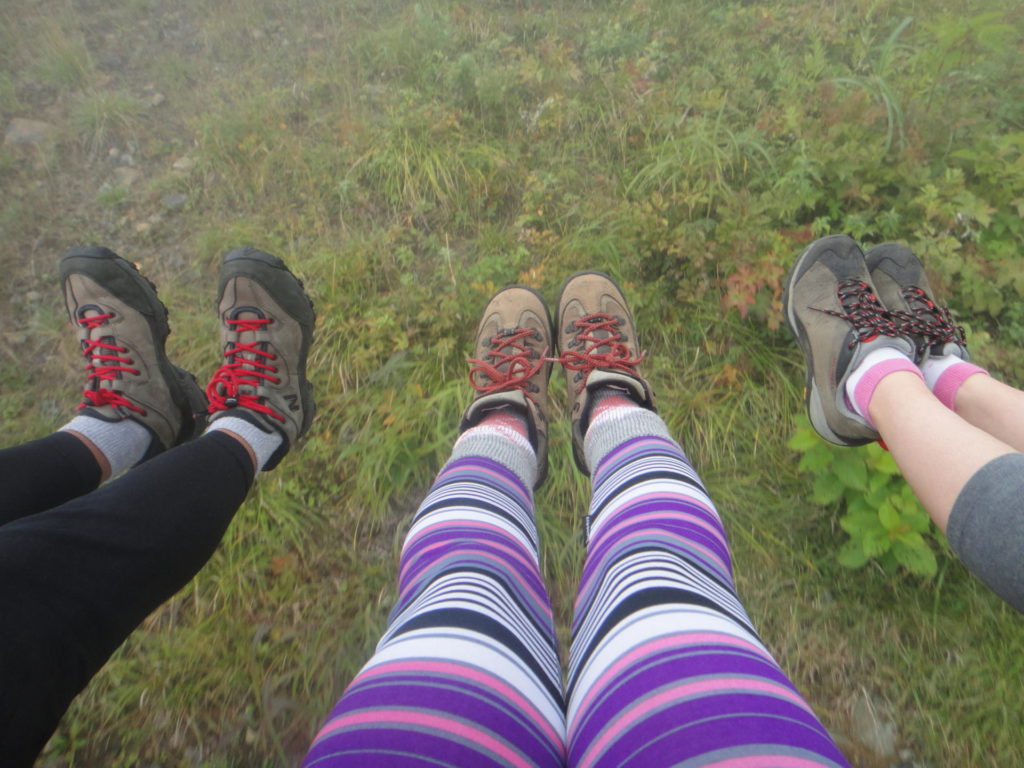
Beginners
If you’re brand-new to the trail, these mountains are a great place to start:
1) Mt. Aso (Kumamoto)
2) Mt. Tsukuba (Ibaraki)
3) Kaimon-dake (Kagoshima)
Tips: Mt. Tsukuba makes a great day-hike for those who want to get a little exercise while exploring the myth-rich town of Tsuchiura. From various temples to rows of historic buildings along the old Mito Ave., there is a lot to do in this town along with hiking Mt. Tsukuba. Though you can climb this mountain year-round, the winter does get quite chilly, and care should be taken to dress warmly while on top of the mountain.
Intermediates
Here are some interesting hikes that are lengthy, but not too tough:
1) Mt. Iwaki (Aomori)
2) Mt. Enna (Gifu/Nagano)
3) Mt. Hayachine (Iwate)
Tips: If you are hiking Mt. Iwaki, make sure you get there a day early to check out Hirosaki Castle and the surrounding park area. You can stay cheaply at local Hirosaki Grand Hotel, only a 15-minute walk from Hirosaki Station. After the hike, go back to the trailhead where Hyakuzawa Onsen is a good place for a soak.
Don’t forget to eat some Aomori apples; some say they are the best in the world.
Advanced
For when you are ready to spend a night on the trail:
1) Mt. Poroshiri (Hokkaido)
2) Yarigatake (Nagano)
3) Mt. Miyanoura (Yakushima, Kagoshima)
Mt. Poroshiri is a challenge and not for those who expect to stay dry. There are numerous places in which you will have to cross streams, so bring waterproof boots and make sure you have a warm change of wool socks to keep your feet warm.
Your gear may get wet, depending on rainfall and water levels, so make sure to wrap everything you want to keep dry in waterproof bags. Note there is only one hut on the trail, so be sure to make a reservation in advance or bring a tent and a warm sleeping bag with you.
